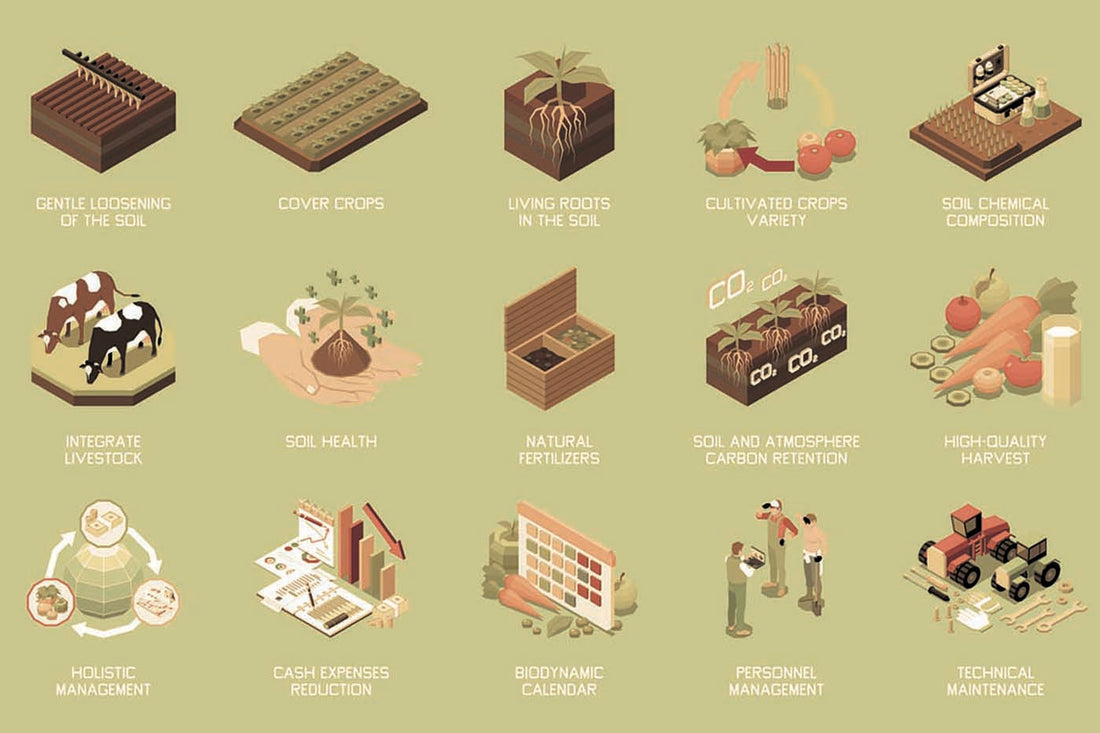
Sustainable vs. Regenerative Fashion: What’s the Difference?
Share
Which Approach is the Future of Fashion?
Fashion has long been at a crossroads between creativity and responsibility. As we seek solutions to the industry’s impact on our planet, two key approaches emerge: sustainable fashion design and regenerative fashion design. While these terms are often used interchangeably, they are distinct concepts with different goals and methodologies. Understanding these differences is crucial for making informed choices, whether as a designer, consumer, or industry leader.
What is Sustainable Fashion Design?
Sustainable fashion design focuses on minimising harm. It’s about reducing waste, conserving resources, and making production as ethical as possible. Some of its core principles include:
- Material Innovation: Using organic, recycled, or low-impact materials like organic cotton, hemp, TENCEL™, and deadstock fabrics.
- Ethical Production: Ensuring fair wages, safe working conditions, and transparency in supply chains.
- Waste Reduction: Emphasizing circularity with recyclable, biodegradable, or reusable products.
- Water & Energy Conservation: Cutting down on excessive water use, using renewable energy in production, and reducing carbon emissions.
- Longevity & Repairability: Designing garments that last longer and can be repaired instead of discarded.
Sustainability in fashion works within existing systems to improve practices and reduce the industry’s footprint. It’s a step in the right direction, but it still operates within a framework that assumes some level of depletion.
What is Regenerative Fashion Design?
Regenerative fashion design goes beyond sustainability. Instead of merely minimising harm, it actively seeks to restore and replenish ecosystems. This approach borrows from regenerative agriculture and applies similar principles to fashion production. Key aspects include:
- Regenerative Agriculture & Fibers: Supporting farming methods that rebuild soil health, increase biodiversity, and capture carbon. Materials like regenerative cotton, wool, and flax help restore the environment.
- Biodiversity & Ecosystem Health: Prioritizing fibres and dyes that enhance, rather than degrade, natural systems.
- Localized & Indigenous Knowledge: Working with traditional techniques that support nature and local communities, such as handweaving, natural dyeing, and regenerative land management.
- Closed-Loop & Circular Design: Designing with the end of a garment’s life in mind, ensuring materials can be composted, biodegraded, or fully reabsorbed into the earth.
- Carbon Positivity: Moving from reducing emissions to creating systems that sequester carbon, like using regenerative farms as carbon sinks.
Regenerative fashion doesn’t just “do less harm”; it actively participates in healing the environment and fostering resilience within communities.
The Key Difference: Sustaining vs. Restoring
The fundamental difference between sustainable and regenerative fashion is the mindset:
- Sustainable fashion is about maintaining balance and slowing down destruction.
- Regenerative fashion is about repairing damage and creating abundance.
Sustainability often works within the limits of existing supply chains, whereas regeneration demands a transformation of those systems.

Why Regeneration is the Future
While sustainability is still vital, the shift toward regeneration is gaining momentum. The climate crisis demands more than harm reduction—we need systems that give back to nature, enrich the soil, support biodiversity, and empower communities. The future of fashion is not just about doing less harm but actively being a force for good.
At Wilde Hippi, we embrace a free-spirited, conscious approach to fashion, recognising that our choices can either drain or regenerate the planet. By moving beyond sustainability and leaning into regenerative fashion, we can create a more beautiful, abundant world—one thread at a time.
Final Thoughts: How to Support Regenerative Fashion
As a consumer or designer, you can support regenerative fashion by:
- Choosing brands that work with regenerative agriculture and ethical production.
- Learning about and supporting indigenous textile practices.
- Opting for natural dyes and biodegradable materials.
- Supporting small-scale artisans who prioritize ecosystem health.
- Investing in quality over quantity and repairing garments whenever possible.
The choice isn’t just between sustainability and regeneration—it’s about evolving towards a future where fashion is a healing force. Are you ready to be part of the change?
What do you think about the shift from sustainable to regenerative fashion? Let’s start a conversation—drop your thoughts in the comments!
Thread:Ed: Educational Outreach on Sustainable Fashion and Textiles
If you're interested in learning more about sustainable fashion and textiles, visit my Thread:Ed page, where I explore educational outreach initiatives dedicated to making the industry more ethical and regenerative. Let’s keep the conversation going and weave a better future together!🌿
Wilde Reads: Books For Change
If you're passionate about sustainability and fashion, why not join our Wilde Hippi Book Club? Together, we’ll explore books that inspire change, discuss new ideas, and build a community committed to ethical living. We are currently read The Future We Choose by Christiana Figueres and Tom Rivett-Carnac Let’s turn the page towards a better world! 📚✨
With gratitude,
Tala 🌿✨

